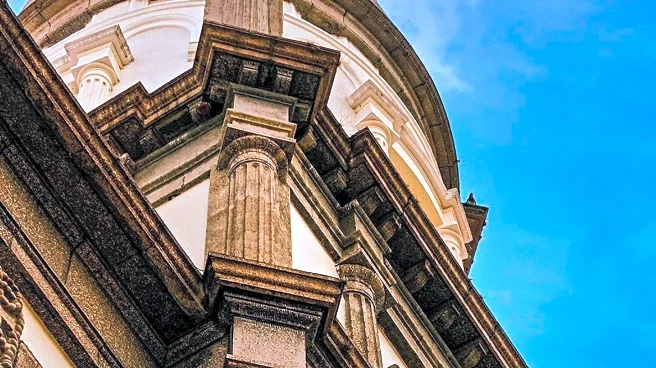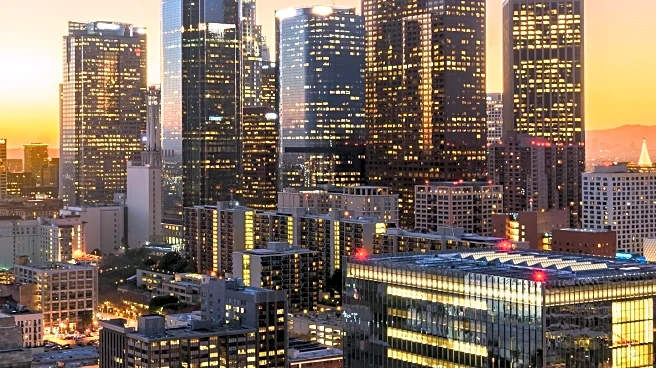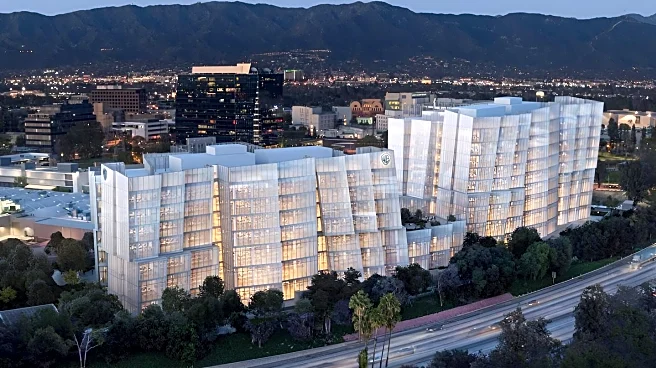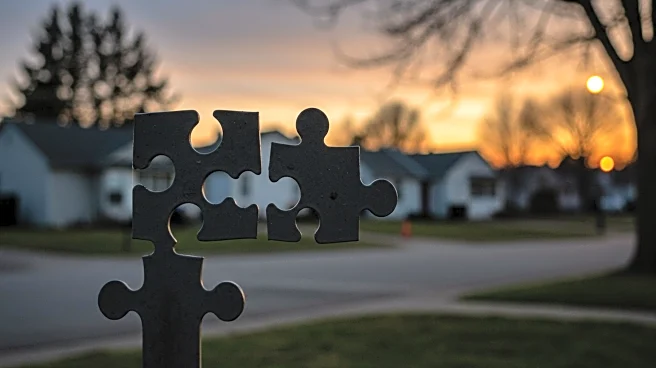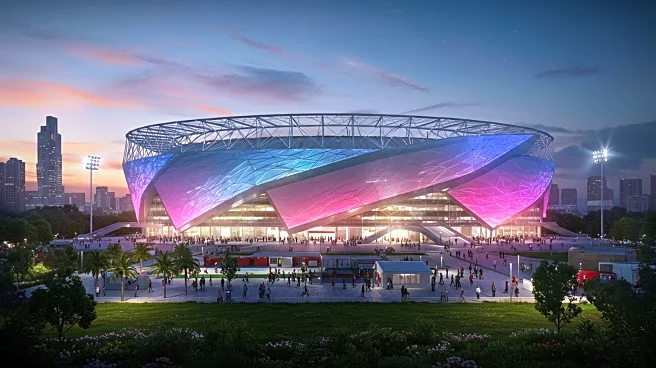What's Happening?
Hollywood Forever Cemetery in Los Angeles has introduced a new five-story mausoleum, known as the Gower Mausoleum, to accommodate the growing demand for burial spaces. The cemetery, which is the final resting place for notable figures such as Judy Garland and Rudolph Valentino, is expanding vertically due to limited space. The mausoleum, designed by architects Roberto Sheinberg and Michael Lehrer, aims to provide a serene environment with marble finishes, natural light, and views of Los Angeles landmarks. Two of its five floors have already sold out, indicating strong interest from the community.
Why It's Important?
The introduction of the Gower Mausoleum reflects a broader trend in urban areas where space constraints necessitate innovative solutions for burial practices. By going vertical, Hollywood Forever Cemetery is addressing the needs of families seeking permanent resting places for their loved ones without expanding into new land. This development highlights the evolving nature of cemeteries, which are increasingly becoming spaces for both remembrance and community activities, such as festivals and yoga sessions. The mausoleum's design also emphasizes the importance of creating aesthetically pleasing environments for mourning and reflection.
What's Next?
As demand for burial spaces continues to rise, Hollywood Forever Cemetery may explore further vertical expansions or additional mausoleums. The success of the Gower Mausoleum could inspire other cemeteries in urban areas to adopt similar strategies. Community engagement through events and activities at the cemetery is likely to continue, fostering a unique blend of memorialization and living community space. Stakeholders, including architects and cemetery managers, will need to balance the need for space with the desire to maintain the cemetery's cultural and historical significance.
Beyond the Headlines
The shift towards vertical mausoleums raises questions about the future of burial practices in densely populated cities. It challenges traditional notions of cemeteries as solely places of mourning, transforming them into multifunctional spaces that serve both the living and the deceased. This trend may influence cultural perceptions of death and memorialization, encouraging more sustainable and community-oriented approaches to end-of-life care.
